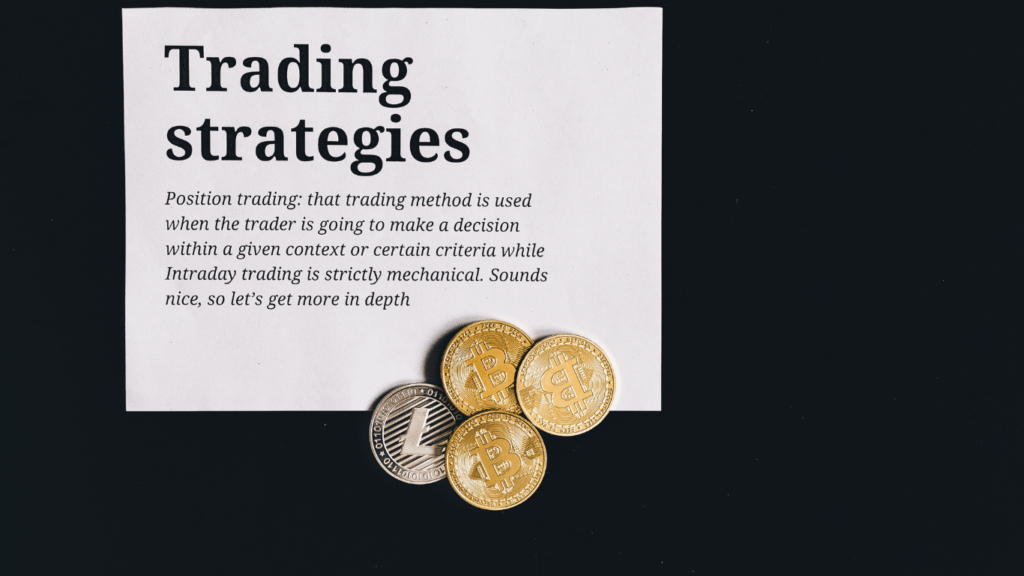The Importance of Market Indicators
Market indicators serve as essential tools for traders in understanding market trends and making informed decisions. These indicators provide insights into price movements, trading volumes, and overall market sentiment. By analyzing these metrics, traders can predict potential price actions and adjust their strategies accordingly.
Indicators like Moving Averages (MAs) help identify trends by smoothing out price data. A 50-day MA crossing above a 200-day MA often signals a potential uptrend, while the reverse indicates a possible downtrend.
Relative Strength Index (RSI) measures the speed and change of price movements. An RSI above 70 suggests an asset is overbought, while below 30 indicates it’s oversold.
Volume indicators track trading activity levels, providing clues about the strength of a price move. A spike in volume can confirm the validity of a price breakout or breakdown.
Sentiment indicators, such as the Fear & Greed Index, gauge overall market sentiment by analyzing emotions driving market behavior. High levels of fear typically indicate a buying opportunity, while extreme greed suggests caution.
Understanding these indicators helps traders navigate the volatile crypto market more effectively, allowing for better timing in buying or selling assets. With the right knowledge, one can turn potential market uncertainties into profitable opportunities.
Key Crypto Market Indicators
Crypto market indicators help traders make strategic decisions. Key indicators include Moving Averages, Relative Strength Index, On-Balance Volume, and Bollinger Bands.
Moving Averages
Moving Averages (MAs) show average price data over specific periods, smoothing out price action to identify trends. I find the Simple Moving Average (SMA) and Exponential Moving Average (EMA) valuable. SMA averages data over a set period, while EMA gives more weight to recent prices.
Relative Strength Index (RSI)
The Relative Strength Index (RSI) measures price change speed and direction over 14 days, providing overbought or oversold conditions. RSI values range from 0 to 100. A reading above 70 suggests overbought conditions; below 30 indicates oversold conditions.
On-Balance Volume (OBV)
On-Balance Volume (OBV) tracks trading volume to predict price changes. OBV rises when volume on up-days exceeds volume on down-days. Higher OBV signals increased buying pressure; lower OBV indicates selling pressure.
Bollinger Bands
Bollinger Bands consist of a middle band (SMA) and two outer bands representing standard deviations. These bands expand and contract based on market volatility. When prices move toward the upper band, I see potential overbought conditions; movement toward the lower band indicates potential oversold conditions.
Technical vs. Fundamental Indicators
Trading decisions in the cryptocurrency market often hinge on understanding both technical and fundamental indicators.
Technical Indicators
Technical indicators analyze past price movements and trading volumes to predict future market behavior. For example, Moving Averages (MAs) help identify trends by smoothing out price data over specific time periods.
The Relative Strength Index (RSI) assesses the speed and change of price movements, flagging overbought or oversold conditions. On-Balance Volume (OBV) links volume flow to price action, predicting potential price changes.
Bollinger Bands use standard deviations to illustrate price volatility and identify overbought or oversold market conditions. These tools enable traders to anticipate price actions, making informed decisions based on historical data patterns.
Fundamental Indicators
Fundamental indicators evaluate the intrinsic value of a cryptocurrency by analyzing various economic, financial, and qualitative factors. Metrics like market capitalization, transaction volume, and network activity provide insights into a coin’s value.
For example, market capitalization measures a cryptocurrency’s total value, while transaction volume indicates the frequency and amount of transactions.
Network activity assesses aspects like the number of active addresses and transaction count. These signals help traders understand the underlying forces driving a cryptocurrency’s value, guiding long-term investment decisions based on the asset’s inherent strengths and weaknesses.
Strategies for Better Trading Decisions

Implement strategies based on different trading styles to improve decision-making in crypto markets.
Day Trading
Day trading involves executing multiple trades within a single day to capitalize on short-term price movements. I look for high volatility assets as these provide greater opportunities for profit.
Key indicators used in day trading include:
- Moving Averages (MAs): MAs help identify trend direction and potential reversals. Shorter time frames like the 5-minute or 15-minute MAs are preferable in this context.
- Relative Strength Index (RSI): RSI indicates overbought or oversold conditions, helping gauge entry and exit points. An RSI above 70 suggests overbought, while below 30 indicates oversold.
- Volume Indicators: Tools like On-Balance Volume (OBV) predict price changes based on trading volume, assisting in confirming price trends.
Swing Trading
Swing trading focuses on capturing price swings over several days or weeks. I rely on technical and fundamental analysis to predict medium-term trends.
Important indicators for swing trading include:
- Bollinger Bands: Bollinger Bands identify potential overbought or oversold conditions in the market, indicating optimal buy or sell opportunities.
- Fibonacci Retracement Levels: These levels highlight potential reversal zones, helping in setting target prices and stop losses.
- MACD (Moving Average Convergence Divergence): MACD shows trend direction, strength, and momentum, useful for determining entry and exit points based on bullish or bearish signals.
Long-Term Investing
Long-term investing aims for substantial gains over months or years. I prioritize fundamental analysis to assess the intrinsic value of cryptocurrencies.
Crucial factors in long-term investing are:
- Market Capitalization: Market cap indicates a coin’s overall value and stability. Higher market cap often suggests a more established asset.
- Transaction Volume: High and consistent transaction volume reflects strong market interest and liquidity, which is essential for long-term investments.
- Network Activity: Metrics like active addresses and hash rate provide insights into a network’s health and growth potential.
These strategies, tailored to different trading styles, can enhance decision-making and profitability in the dynamic crypto market.
Tools and Platforms for Monitoring Indicators
Numerous tools and platforms aid in monitoring cryptocurrency market indicators. These platforms provide real-time data and advanced analytical tools for better trading decisions.
TradingView
TradingView stands out for its comprehensive charting tools and a large community of traders. It offers indicators like Moving Averages, RSI, and Bollinger Bands. Its user-friendly interface and customization options simplify complex analyses.
CoinMarketCap
CoinMarketCap is renowned for its broad cryptocurrency database. It provides real-time Market Capitalization, Price, and Volume data. Users can track multiple cryptocurrencies and compare their performance, benefiting long-term investors and day traders.
CryptoCompare
CryptoCompare delivers a detailed overview of the cryptocurrency market. It features tools for technical analysis and fundamental indicators like Transaction Volume and Network Activity. These tools help users assess the health and value of various cryptocurrencies.
CoinGecko
CoinGecko offers in-depth data on cryptocurrency metrics. It includes indicators such as Market Cap, Volume, and developer activity. It’s beneficial for investors looking to gauge the overall sentiment and project development status.
MetaTrader 4 (MT4)
MetaTrader 4 (MT4) delivers advanced technical analysis tools. It’s popular among forex and crypto traders for indicators like MACD, RSI, and moving averages. The platform’s algorithmic trading capabilities enable users to automate their strategies.
CryptoQuant
CryptoQuant focuses on on-chain data analytics. It provides insights into metrics such as Bitcoin exchange flows and miner data. These metrics help traders understand market sentiment and potential price movements caused by significant players.
Coinigy
Coinigy offers an all-in-one trading platform with access to multiple exchanges. It provides comprehensive charting features, including indicators like MACD, RSI, and Bollinger Bands. The platform’s integration capabilities allow seamless portfolio management.
Effective use of these tools and platforms enhances trading decisions by providing detailed and real-time market insights. Their diverse features cater to various trading styles, from day trading to long-term investing, ensuring traders stay informed and ahead in the dynamic crypto market.

 Ricky Morenolendez is a key contributor at The Digi Chain Exchange, recognized for his deep expertise in cryptocurrency and blockchain technology. With years of experience in analyzing market trends and providing actionable insights, Ricky has become a trusted voice in the crypto space. His work focuses on helping investors understand the nuances of digital assets, from Bitcoin to emerging altcoins. Ricky’s dedication to educating the community on market strategies and crypto developments has made him an invaluable asset to The Digi Chain Exchange team.
Ricky Morenolendez is a key contributor at The Digi Chain Exchange, recognized for his deep expertise in cryptocurrency and blockchain technology. With years of experience in analyzing market trends and providing actionable insights, Ricky has become a trusted voice in the crypto space. His work focuses on helping investors understand the nuances of digital assets, from Bitcoin to emerging altcoins. Ricky’s dedication to educating the community on market strategies and crypto developments has made him an invaluable asset to The Digi Chain Exchange team.

